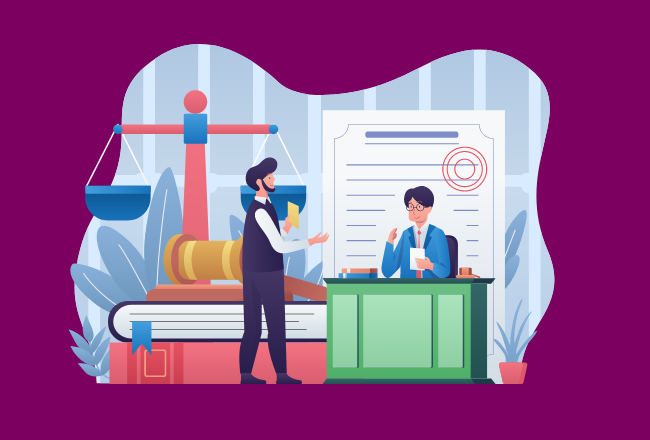
Before You Scale You Have To Standardize
How to Scale Your Business for Long-Term Growth
For anyone who’s started a business, you know that it can be challenging to go from start-up to scale-up. As a start-up, you simply do what you need to survive, with your primary focus on adding customers and revenue any way you can. But as you scale your business for long-term growth, you must make strategic decisions that impact both your organizational structure and your operational processes. The decisions you make as you scale will be determined by your long-term goals of course. Moving your business from start-up to scale-up is a journey in which you’ll touch nearly every aspect of your business, from how you operate to the culture you want to establish.
What exactly is a “scale-up”?
During the start-up phase, you’re focused on finding product market fit and figuring out the unit economics that are sustainable for your product/service.
Once you have a product/service offering that fits the market you’re targeting and you have a business model that is generating a return on your investment, you’re ready to scale-up. On the journey to scaling your business, one of the first things to focus on is your business operations. What you want to achieve is standardization across your processes and key workflows.
What should I standardize?
Start by standardizing your processes in these three areas:
- Your Revenue Model. You’ve established that you have a product or service that is valuable to the market, but to ensure you can scale, it’s time to standardize on the processes used to drive revenue for your business. A big part of this includes standardizing your pricing strategy so that your staff and clients easily understand the value / price equation, and more importantly, so you have a predictable revenue model to drive growth. Do you bill by the hour? By service offered? By the size or complexity of the engagement? Do you bill monthly or quarterly? When a service is started? Or completed? You’ll be much more efficient if your revenue model is standardized and can easily be replicated client to client.
- Your Onboarding Process. Whether you are bringing on new staff, or new clients, having a standardized process will save you time and ensure a productive start to your engagement. The way you interact early on with a client or a new employee is also really important, as it is a reflection of your brand and your culture. Do you have clear communication? Are you setting the right expectations for the relationship? Does everyone understand the goals or what success looks like? Following a consistent process will ensure a great start to all of your staff and client relationships.
- Your Business Process. In your business, you do things every day to support your business operations like pay bills, issue invoices, process payroll, manage projects, communicate with clients, etc. The more standardized these routine tasks are, the more efficient and scalable your business becomes. We are fortunate that tech can now play a key role in helping to automate some of the lower value, routine tasks that support your overall business operations, which can make a big difference in efficiency and your ability to scale. But adopting tech too fast, without really knowing how it supports specific processes can be frustrating. So let’s look at a framework for helping you standardize these key areas of your business.
How do I standardize?
- Document: It doesn’t matter how standardized your business is if only one person knows the process, a common problem for small businesses where there are only a few employees. Start by writing down the steps for delivering each product and service you provide, and for each of the processes your business runs frequently. This establishes your workflow for each of these business operations. Get these workflows as simple as possible. Just the act of writing the steps down will start to help you identify inefficiencies or redundancies in these workflows. Are you entering client information in twice? Are you printing and mailing documents that could be shared electronically? Are you waiting on an approval before you can complete a task? As you start to identify inefficiencies, technology can potentially be a solution to streamline and automate. But it all starts when you have your processes documented. Once you’ve mapped your workflows it will be clear where you need a human—and where you don’t.
Now that you have your ideal workflow mapped out, you can start down the path of optimizing to further drive your ability to scale. Automation and integration both play key roles in optimizing and standardizing your workflows. - Automate: Wherever possible, automate your low value, repetitive tasks. Once you have a standard workflow mapped out, it is much easier to identify exactly what you need from either process improvements or potentially a technology solution. You can use tech to automate routine tasks like collecting documents from clients, paying bills, scheduling appointments, taking payments, managing projects, sending reminder emails, etc. You will avoid app overload by starting with a clear workflow roadmap to help you evaluate tech solutions.
- Integrate: Does the tech in your workflow integrate? Your workflow will be much better optimized if the answer is yes. This really is the future of technology, moving away from the closed suites, and building tech stacks that include best of breed products that integrate together. A framework to think about this in your own business is to consider the categories of data you are collecting. Most common are your customer data, your financial data, and supporting documents associated with each segment. The systems that support these segments become your single source of truth. And the best tech stacks deliver integration with these key customer, financial and document repositories. So, consider the tech you are using now to store this information, and consider integration capabilities in your evaluation of technology solutions to support your business workflows.
And there you have it – Document. Automate. Integrate. Repeat. Once you have this down, you’ll be well on your way to standardizing key components of your business in support of long-term growth.




